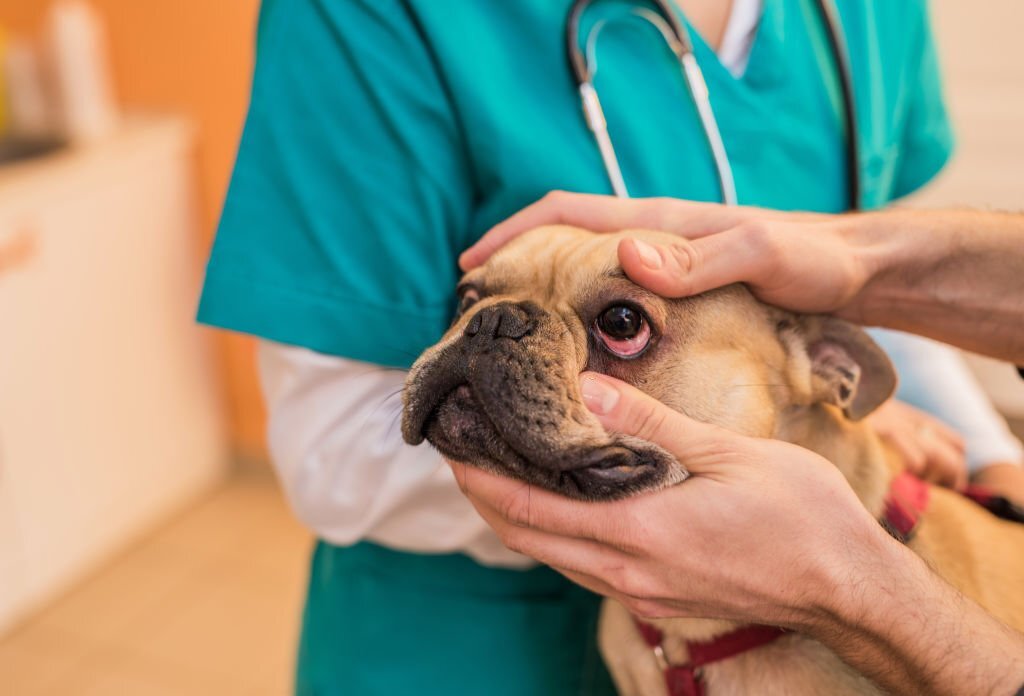In veterinary medicine, addressing animal cataracts requires specialized surgical expertise and a comprehensive treatment approach. Cataracts, the clouding of the lens in an animal’s eye, can significantly damage an animal’s vision and overall quality of life. In this fast-paced industry, advances in veterinary ophthalmic surgery have paved the way for effective treatment options.
In the veterinary world, there is a lack of diagnosis and treatment to save the animal’s life. So, it’s necessary to have the best animal health solutions for overall well-being. Keep reading to learn more!
Veterinary Ophthalmic Surgery- 5 Main Steps
- Preoperative Evaluation:
The first step thoroughly assesses the animal’s health and eye condition. A veterinary ophthalmologist evaluates the cataract’s size, location, and impact on vision. This step helps determine if the animal is suitable for surgery and ensures that any underlying health issues are addressed before proceeding.
- Anesthesia and Sedation:
Before the surgery, the animal is administered anesthesia and sedation to keep the animal still and comfortable throughout the procedure. Proper anesthesia management is crucial to prevent pain and anxiety during the surgery.
- Surgical Procedure:
The cataract removal procedure typically involves making a small incision in the eye’s surface to access the clouded lens. Diverse methods are used to break cataracts into fragments for removal, such as phacoemulsification. After the cataract removal, an artificial intraocular lens (IOL) may be injected to reform the clear vision
- Postoperative Care:
After the surgery, close monitoring and care are essential. The animal’s eyes are regularly examined for signs of infection, inflammation, or complications. Eye drops and medications are prescribed to promote healing and prevent infections. Pet owners must follow postoperative care instructions diligently to ensure the best possible outcome.
- Recovery and Follow-up:
The recovery period involves allowing the eye to heal and adjust to the new IOL. The animal’s vision gradually improves over time. Regular appointments with the veterinary ophthalmologist are scheduled to monitor the healing process and make any required adjustments for the further treatment plan.
Comprehending these essential five steps of veterinary cataract surgery and treatment is crucial for veterinary professionals. This offers sufficient care and enhances the quality of life for animals involved in cataracts.
Best Tips to Treat Veterinary Cataract Surgery
The best way to treat your pet’s veterinary eye surgery is to follow your veterinarian’s instructions properly. Veterinary ophthalmic surgery is a helpful treatment for eye cataracts. Providing your pet with the proper care after surgery is vital to ensuring a successful outcome.
Here are some of the best ways to treat your pet’s cataract eye surgery effectively:
- Administer all medications as specified by your veterinarian. This may include pain medications, antibiotics, and anti-inflammatory medicine.
- Keep your pet’s head elevated for 24 hours after surgery. It will help to reduce bleeding and swelling.
- Place (E-collar) on your pet’s eye to prevent it from scratching or rubbing its eye. The E-collar should be worn for at least 2 weeks or as directed by your veterinarian.
- Do not allow your pet to bathe or swim for at least 2 weeks after cataract surgery.
- Take your pet to their follow-up appointments with your veterinary ophthalmologist as scheduled. This will allow your veterinarian to observe your pet’s recovery and ensure a successful surgical procedure.
To Wrap Up!
In conclusion, veterinary cataract surgery is a specialized field that significantly improves the quality of life for animals with vision impairments. The outlined five-step process – preoperative evaluation, anesthesia, surgical procedure, postoperative care, and recovery – forms a comprehensive approach to successful treatment.
Proper diagnosis, suitable candidates, and diligent postoperative care are paramount. Adhering to medication schedules, providing necessary care, and following veterinary guidance optimize recovery and minimize complications.
Advancements in veterinary eye surgery, particularly cataract treatment, showcase a commitment to animal welfare. By understanding and implementing the steps and tips highlighted, veterinary professionals and pet owners contribute to the well-being and enhanced quality of life of animals affected by cataracts.
Vet and Tech is an online veterinary education platform that delivers different veterinary education resources on one site.
Vet and Tech keep you up-to-date with the recent advancements in the veterinary field and allow vet experts and students to do hands-on practice with authentic information.
Frequently Asked Questions (FAQs)
How many types of veterinary eye surgery?
There are different common eye surgeries, but three main types of veterinary cataract eye surgery are given below;
- Femtosecond laser-assisted cataract surgery (FLACS).
- Phacoemulsification.
- Extracapsular cataract extraction (ECCE).
What kind of surgery is best for removing cataracts in the eye?
There are various surgical procedures to treat veterinary cataracts in the eyes. Mainly, veterinary ophthalmologists prefer laser cataract surgery. This surgical procedure is more suitable for creating small incisions than traditional veterinary eye surgery.
In addition, When it comes to dog care, understanding the “dog gland removal pros and cons” is crucial. This procedure can alleviate issues like anal gland problems but may also have potential drawbacks, so informed decisions are vital for your pet’s well-being.


